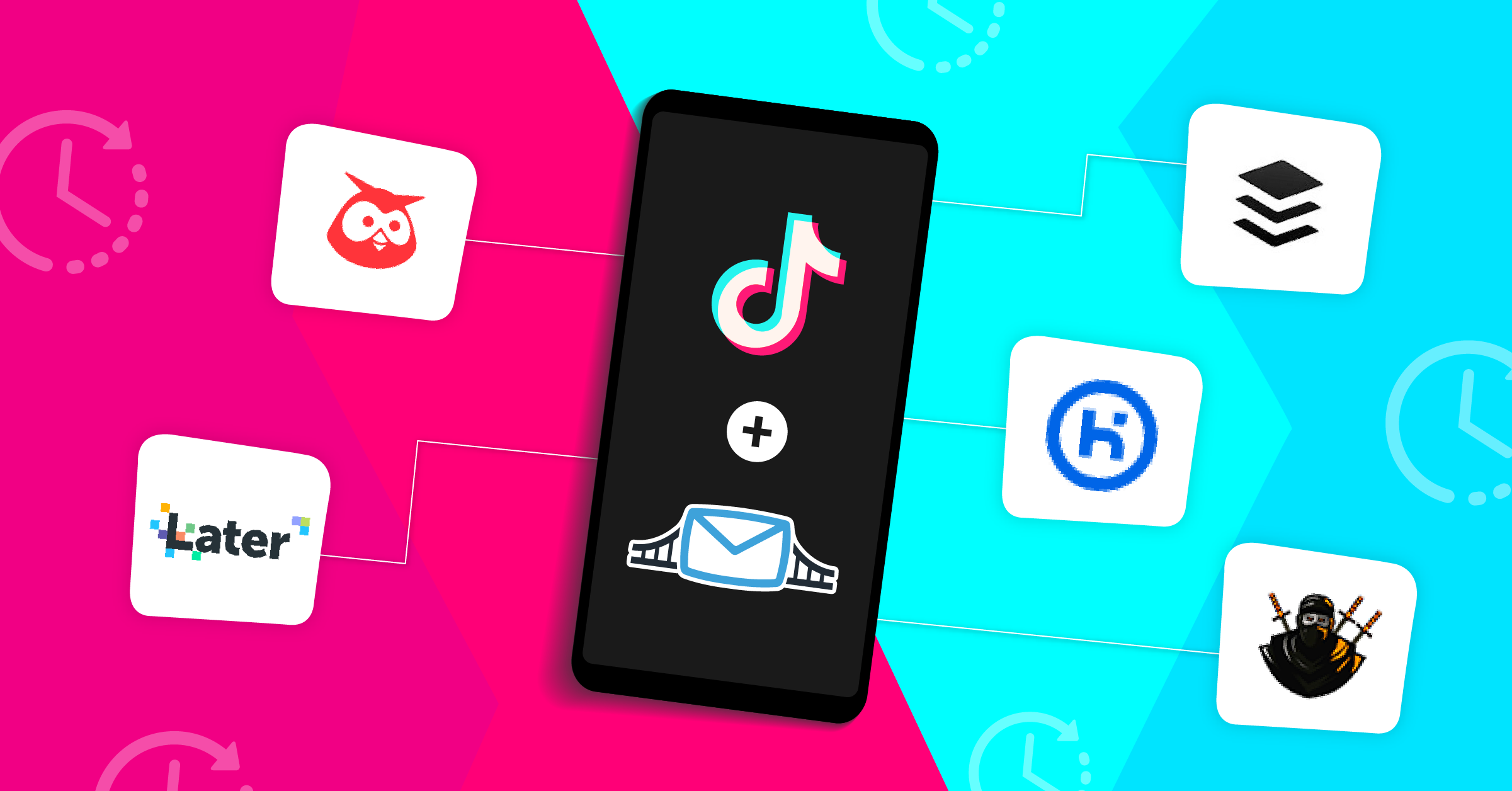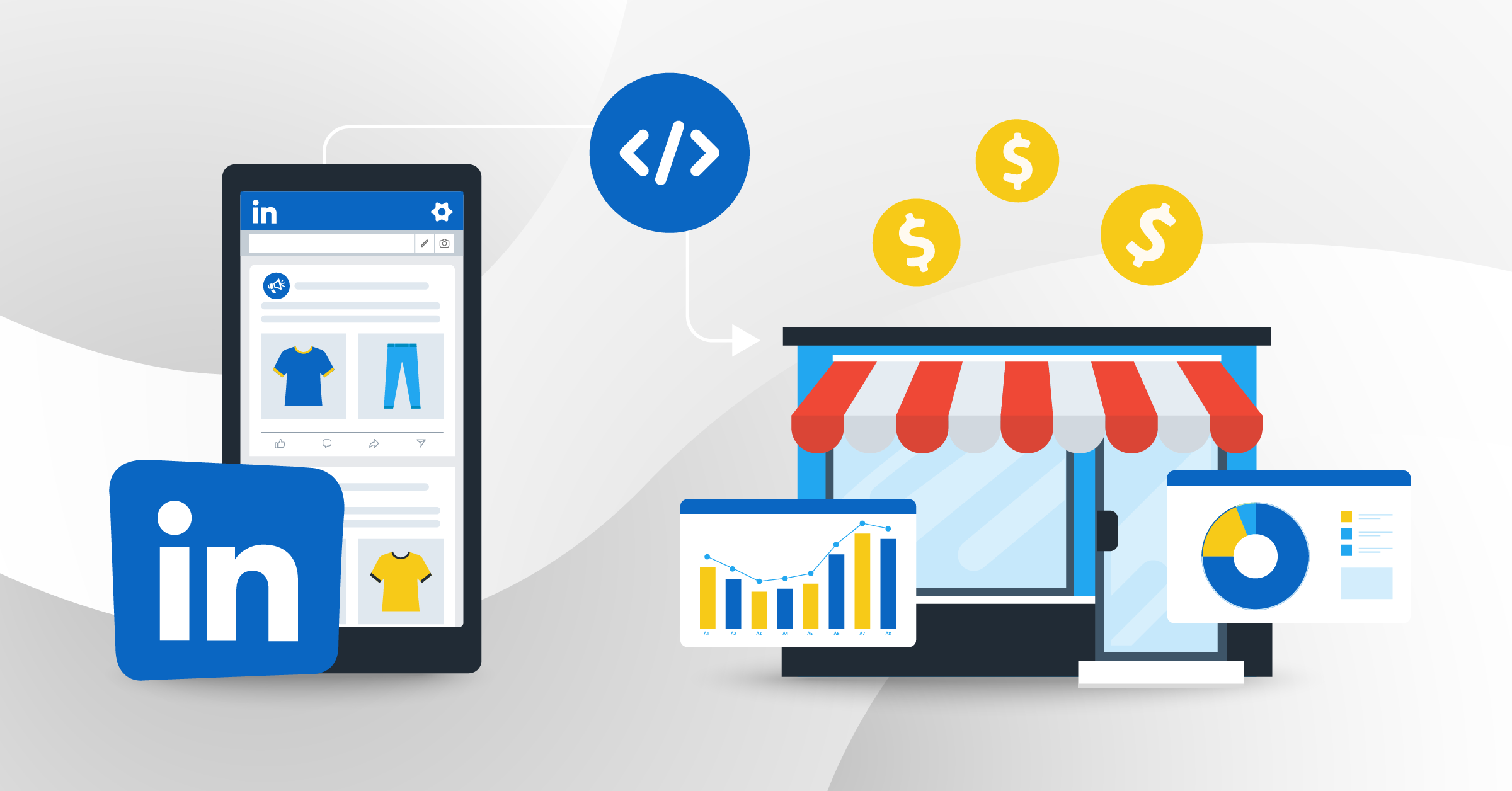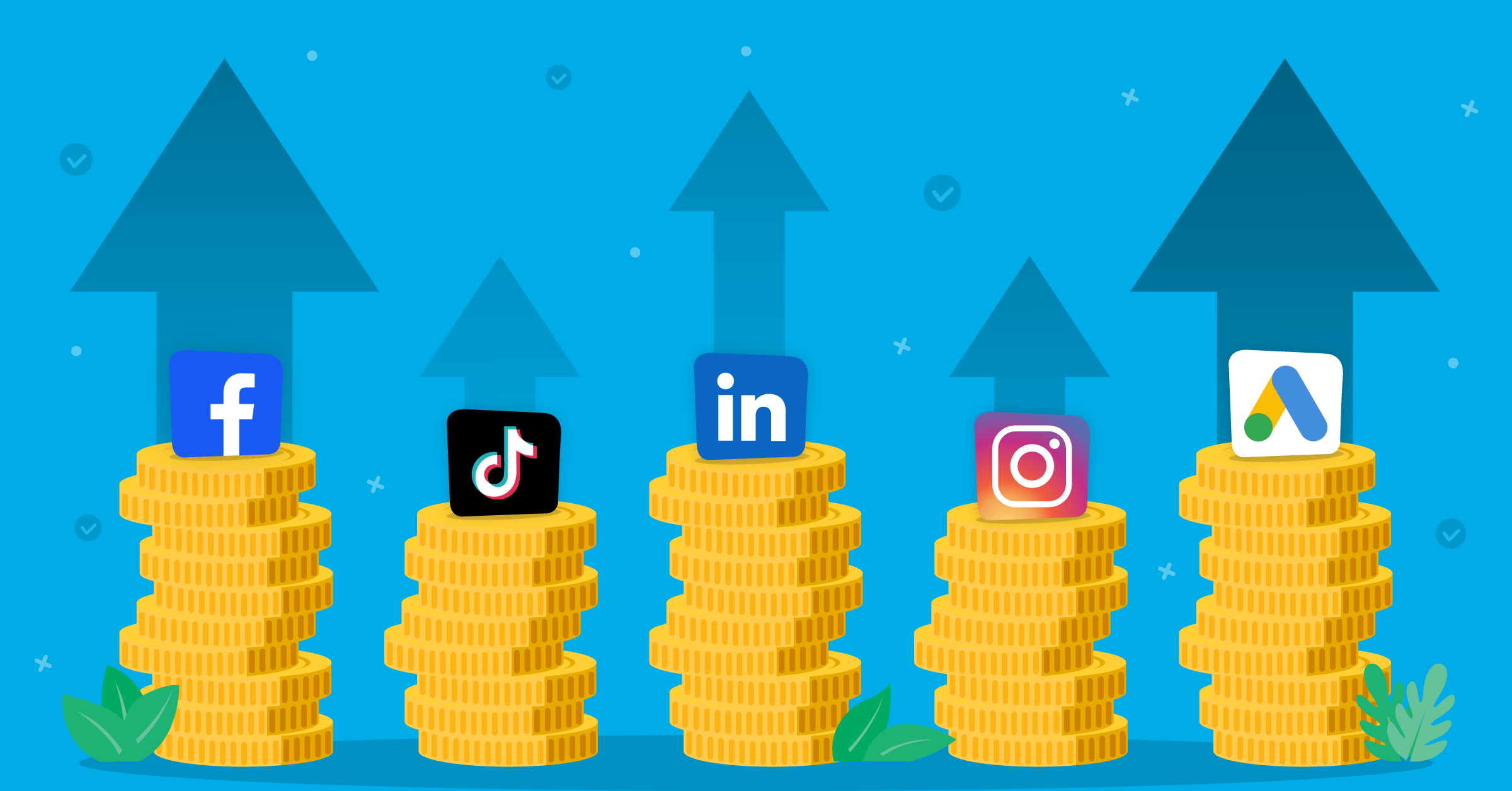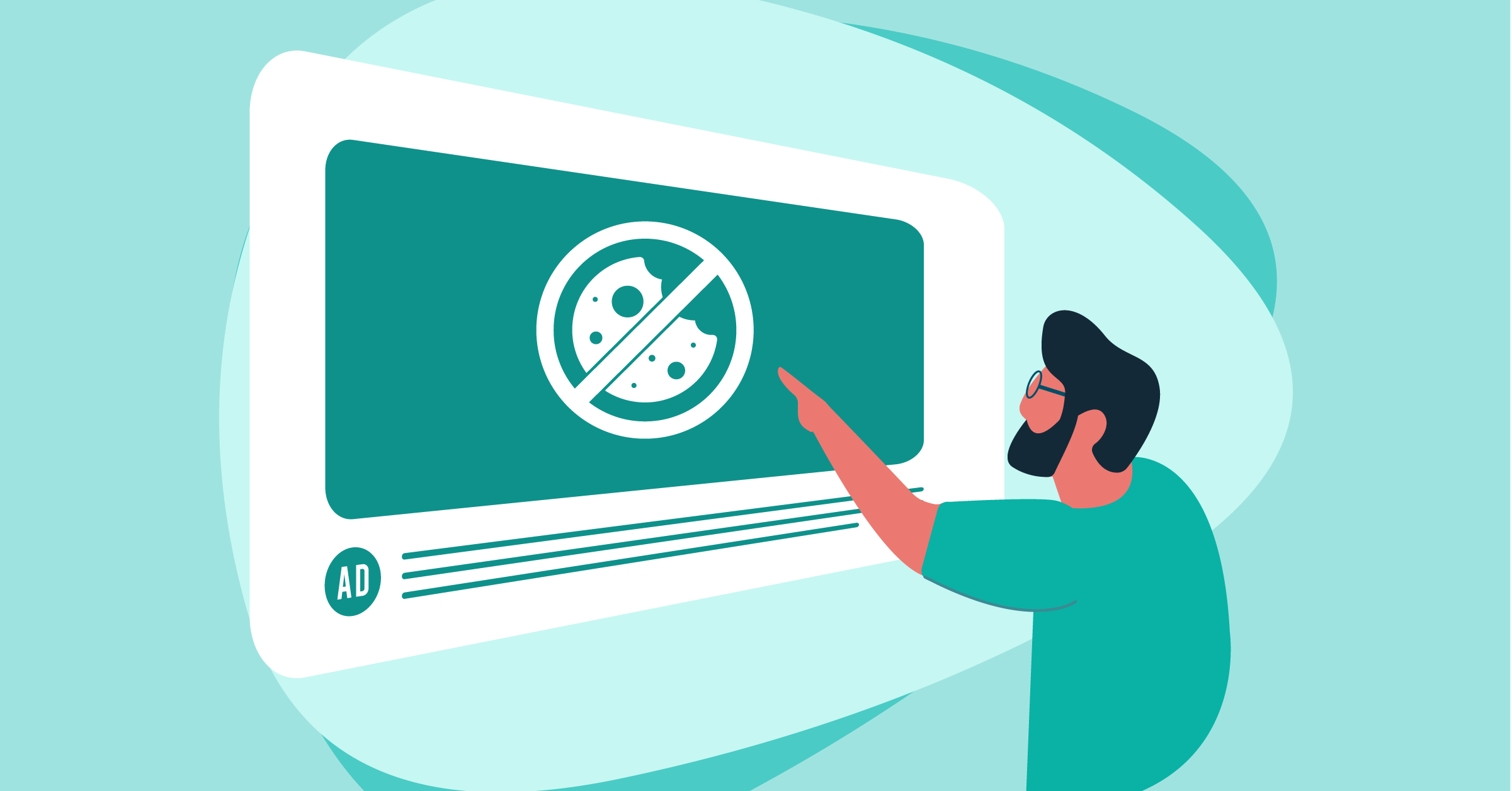
Unlike running email marketing campaigns manually, email automation can streamline your communication with your subscribers.
Most marketers use automation software to send emails because it enables them to send personalized and hyper-relevant emails based on pre-defined triggers. And considering that 75% of email revenue comes from triggered personalized campaigns, it is only logical to use automation.
- What is email marketing automation?
- Benefits of email marketing automation
- How to automate emails
- Developing an email marketing automation strategy
- Email marketing automation best practices for 2024
- Email marketing automation workflow examples
- Automate your email marketing campaigns via LeadsBridge
- What to take away from this?
In this article, you can learn how to automate emails and take your marketing to the next level. Additionally, we’ll introduce a few must-have tools to bridge the gap in your email marketing automation strategy, such as:
What is email marketing automation?
So before we discuss tools and strategies, let’s get the basics right first; what is email marketing automation?
Technically speaking, you can use pre-set rules to trigger email messages and personalize communications based on specific actions users take or don’t take. These rules are defined and implied using email or marketing automation software.
You can automate welcome emails for new signups, send reminders for subscription renewals, suggest products, and many other workflows.
Benefits of email marketing automation
Understanding how to automate your emails prevents you and your team from performing repetitive tasks and frees up your time to attend to more productive activities. It particularly helps reach your audience the right way and engage your customers with hyper-relevant content.
Once it is set up, email automation runs in the background independently. It means you don’t have to handle these tasks any longer manually. This is also an optimized approach to increasing your brand awareness, nurturing your leads, and keeping your customers satisfied with your services in the long run. To enhance this process, you can send emails to text using Gmail, allowing easy access and management of your communications.
The general benefits of email marketing automation include the ability to:
- run automated personalization to increase conversions;
- send more relevant emails using real-time segmentation;
- save time and money by reducing friction and automating workflows;
- schedule emails sync with the customers’ purchase cycle, and lead nurturing strategies.
From a customer’s perspective, statistics show that they prefer receiving tailored content much more than generic emails. As a result, automated emails are opened more often, getting 119% higher click rates than broadcast emails.
Learn more about email nurturing for businesses in this complete guide.
How to automate emails

To create a high-functioning marketing ecosystem, you’ll need to connect lead generation, lead management, and customer nurturing efforts to all other internal systems.
The general idea is to use email workflow software instead of having people send or reply to marketing emails every day. In addition, you can use different email automation workflows together with third-party integrations to automate the entire process.
Wondering how to automate your emails and put your communication on autopilot? To start with, here are some workflows you’d want to automate.
Choosing an email automation software
Numerous email automation software are available, but not all are suitable for your specific business needs. So, first, you have found the email marketing automation platform that matches your business goals. Then, you’ll still need to connect it to the different data points in your system (such as your CRM and Excel sheets). This is where LeadsBridge comes in, offering integrations that do just that. In essence, LeadsBridge creates a data bridge between your email marketing app and other advertising platforms to an entire workflow in automated motion.
Defining your email campaign recipients
Who is on the receiving end of your emails? Answering this question helps you understand your email marketing strategy and the related workflows.
Categorizing your email recipients involves several factors, including lifecycle stages, upsell campaigns, existing customers, etc. Moreover, automating segmentation can help you figure out the messaging you need to create for each segment.
Learn more about lead lifecycle management and stages here.
Determining your email campaign’s goal
Your emails must be in alignment with your marketing strategy. So you need to plan the emails’ content, their purpose, and where they guide your contacts to. However, this is the centerpiece of your marketing efforts and an immensely important step. So keep reading, because we’ll come back to this point in just a few paragraphs.
Defining enrollment benchmarks
Enrollment benchmarks are the rules and regulations you set to specify which contacts enter your automatic workflows. You can create triggers that perform this action in several ways — new subscribers, contacts who submit a Facebook Lead Ads form, someone who clicks on the demo request link, and more.
Outlining the desired automation processes
By using the right platform, you can specify the actions you want to automate and also achieve the target outcome. These could be sending an email based on a specific trigger, scheduling routine subscription renewal reminders, or updating email listings.
Specifying your email campaign assets
After defining your email campaign strategy, contact segmentation, and optimizing your messaging accordingly, you’ll need to specify and refine your email assets. Once you have created your clear-cut campaign assets, your automation software can develop services that are aligned with your business goals.
Setting up your email automation and testing
By running tests with the help of automation testing tools, you get to see how your emails perform on a micro-scale so that you can optimize your emails accordingly.
Once you check all the workflow charts, it is time to send them out. Like setting any other automation workflow, the best practice is to monitor the process and see if there are any irregularities to address. Additionally, make sure to revise your triggers, content messaging, and workflows if there are any changes in the marketing strategy.
Developing an email marketing automation strategy
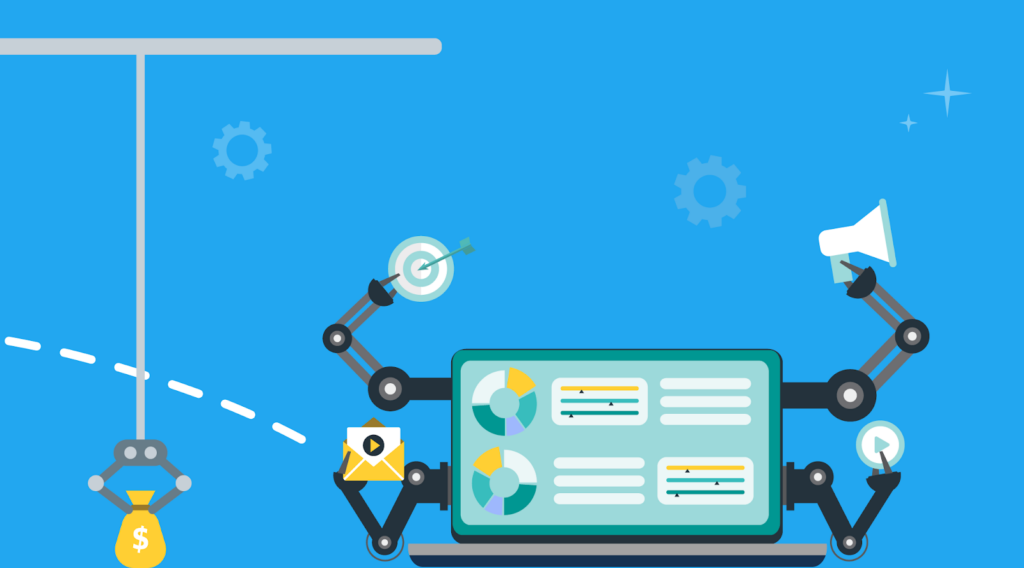
An effective email marketing strategy is the key to achieving your overall marketing goals. Having a defined strategy also helps you to analyze current campaign performance and thrive for new objectives such as expanding your audiences or increasing brand awareness.
Here are some factors to consider when developing an email strategy:
- Develop sustainable workflows: All the processes in your email marketing automation strategy must support growth in the long run. For instance, you can create feedback loops with your customers and prospects, which reflect your company’s performance.
- Find the right customer relationship management (CRM) solutions: Not every CRM is adequate for your business. However, the right CRM software along with DMARC software, can help you keep track of your interactions with all customers and ensure your emails are protected against domain spoofing. This combination allows you to stay in control of your sales and marketing measures, including your email marketing automation efforts.
- Have a lead management strategy in place: The best practice is to manage leads with tested-and-tried methods. While staying aligned with your marketing strategy, you’ll need to manage your online ads, generate leads with forms, optimize landing pages, run email campaigns, etc.
- Integrate your marketing and sales teams: The sales team often has unique insights on what makes the customer take action. When sharing this information with the marketing team, they can create customized strategies that focus on the strength points through messaging, email intervals, etc.
Content marketing email automation strategy
Implementing a content marketing email automation strategy can significantly enhance engagement and drive conversions.
- Begin by segmenting your email list based on subscribers’ interests, demographics, and past interactions.
- Tailor content specifically to each segment’s preferences, ensuring relevance and value in every email.
- Leverage dynamic content blocks to personalize emails further, dynamically updating based on subscriber behavior or preferences.
- Incorporate triggered emails triggered by specific actions such as website visits, downloads, or abandoned carts, delivering timely and targeted content that encourages action.
- Continuously analyze metrics like open rates, click-through rates, and conversion rates to refine your content strategy and optimize performance over time.
Email marketing automation best practices for 2024
AI-Powered personalization: Utilize AI and machine learning algorithms to deliver hyper-personalized content tailored to individual subscriber preferences and behaviors. Leverage advanced segmentation techniques to categorize subscribers based on their interests, purchase history, and engagement levels, allowing for highly targeted and relevant email campaigns.
Omni-channel integration: Integrate email marketing automation with other marketing channels such as social media, SMS, and push notifications to create a cohesive and seamless customer experience across multiple touchpoints. Coordinate messaging and timing across channels to reinforce brand messaging and drive consistent engagement.
Interactive email elements: Incorporate interactive elements like polls, quizzes, and dynamic surveys within emails to increase engagement and encourage user interaction. Interactive emails not only capture attention but also provide valuable data insights into subscriber preferences and interests, enabling further personalization and optimization of future campaigns.
Email marketing automation workflow examples
So what are some good examples of automated email workflows? Let’s go through some of the must-automate workflows to get more out of your lead database and marketing automation app.
Subscriber welcome workflow to trigger subscriptions to your blog.
Everyone loves a good welcome, and that includes your new blog subscribers. This is also valid for your newsletter, webinar registrees, or app subscribers. So use these perfect email automation ideas to send them a welcome email and offer insights on what comes next and what they can expect.
Learn all about email sequence examples and welcome emails here.
New use training workflow to trigger lead lifecycle stages.
Welcoming newcomers is excellent etiquette. However, when offering digital products or services, you’ll need to educate new users/customers to help them understand your product better and also how to get the most out of it.
As your subscribers upgrade and move lower in your sales funnel, your welcome email should differ in content and CTA. You can craft a welcome email series that gets your users started, guides them through the product features, and sends them a different welcome when they convert into paying subscribers.
Lead Nurturing Workflow to trigger multiple top-of-the-funnel conversion events.
The top-of-the-funnel marketing offers are just the beginning. You may offer ebooks, free trials, and webinars in return for signups and, hopefully, a fast-moving user journey down your sales pipeline.
You can set up event workflows to trigger registrations or attendances and aid this process. For instance, send your webinar attendees a welcome email with a CTA for more information. Or, send emails with mid-funnel content to new leads in order to direct them towards becoming qualified leads (MQL) or even customers.
This workflow may contain content, blog posts, web pages, or anything else that you identify as “high-converting” content.
Internal sales rep notification workflow to trigger the bottom-of-the-funnel page views.
Certain user activities should not go unnoticed. This is because if your sales reps connect with the hot leads at the right time, chances are that they can be easily converted.
Define automated workflows to inform your staff to reduce conversion friction or increase customer satisfaction. For example, you can set triggers to send an internal email notification to your sales rep to notify them of high-value user activities. This practice also contributes to achieving speed-to-lead and increases the relevance of the content you send to your leads.
Learn how you can receive Facebook leads’ email notifications for instant follow-ups.
And if you’re looking for something more specific, here’s our step-by-step guide about how to connect Facebook Lead Ads to Email Notification via LeadsBridge.
Abandoned shopping cart workflow to trigger shopping cart abandonment.
For e-commerce businesses, abandoned shopping carts are both an asset and a pain. However, you can set up abandoned cart workflows that trigger an email to remind users of their unfinished purchases. In addition, you may offer a limited-time discount code or incentive to encourage them to complete the transaction.
Customer satisfaction workflow to trigger NPS scores.
Net Promoter Score (NPS) is a metric that measures customers’ loyalty to a brand, which ranges from -100 to +100. The higher the score, the stronger the customer loyalty is.
You can run NPS score surveys and use the result as a property to trigger workflows. For instance, by knowing your ideal customer happiness score, you’ll define a threshold for your dynamic list of satisfied customers. Next, design a workflow that sends exclusive content to customers with “satisfactory” scores. It could be upscaled content, special offers, or limited discounts.
On the contrary, you can reverse the process by setting workflows to trigger “dissatisfied” customers to help improve their experience.
Upsell and cross-sell workflow to trigger post-purchase conversions.
Authentic companies create authentic relationships with users. It means that a sale is not the end of communication with your customers.
This strategy maintains a genuine brand image while leaving space to build workflows for upselling or cross-selling to your existing customers. Does that give you any email automation ideas?
Create lists of contacts who purchase a specific product and assemble automatic list updates to streamline the process. Then, design workflows encourage upsells or suggest other products/ services.
Automate your email marketing campaigns via LeadsBridge
Email marketing automation helps optimize your email marketing strategy and personalize your communication to increase its effectiveness in targeting your audience and existing customers.
You just need to find your ideal email automation tool for email list segmentation and running drip campaigns, and begin setting up efficient email marketing workflows.
Another important aspect to note is the perks of digital receipts in email marketing automation. They provide real-time confirmation of transactions and help track buyer behavior. Besides, your customers will appreciate the kind of convenience, punctuality, and environmental responsibility that digital receipts represent.
Another important aspect to note is the perks of digital receipts in email marketing automation. They provide real-time confirmation of transactions and help track buyer behavior. Besides, your customers will appreciate the kind of convenience, punctuality, and environmental responsibility that digital receipts represent.
Advantages of using LeadsBridge integration
Even with the most elaborate email marketing platforms, you can easily jeopardize your marketing efforts if you’ve not integrated them fully into your marketing system. Besides the shortcomings in communication, you’ll find it difficult to measure your performance and get accurate insights into your campaigns.
Fortunately, LeadsBridge can offer you integrations to create a fully integrated system by bridging the gap between your email marketing with other tools. Then, you can streamline the data transfer between different points such as your CRM, advertising platforms, email, and event management tools.

In addition to the best-in-class integrations, another perk of using LeadsBridge is that you can decide to use its free email receipt feature. It allows you to keep track of your leads as they come in, notify your staff, and better understand their lead-generation efforts. This option is available for any of our integrations. All you have to do is sign up and start using LeadsBridge for free.
Other benefits of using LeadsBridge include:
- turning contacts gathered from different channels into subscribers;
- updating your lead list with survey form entries automatically;
- streamlining segmentation to place your subscribers into different categories;
- setting up drip campaigns to send emails automatically;
- And, automating workflows to track your unsubscribers and cold leads.
Top integrations to connect your email workflow software and marketing tools
- ActiveCampaign automation
ActiveCampaign automation services are great for running email campaigns on autopilot. It becomes particularly easy to send personalized communication if you already use ActiveCampaign’s integrated CRM. The system uses this data to create frictionless email communication and move prospects down the funnel further.
- Constant Contact automation
Constant Contact email automation is perfect for communications related to e-commerce. It is a budget-friendly app that allows you to target customers based on purchase behaviors and deliver personalized and relevant messages.
- Klaviyo email automation
If you need to manage numerous email campaigns and audience lists at once, this platform is for you. Klaviyo automation platform lets you design attractive email templates and test out responsive emails and newsletters to see how they perform.
- Email Notification
Email Notification is one of the best email workflow software for B2B businesses. It helps funnel segmentation and easy trigger definition. Using this app’s easy-to-use features, you can create target audiences and reach your customers more effectively.
What to take away from this?
Understanding how to automate emails boosts the efficiency of your sales and marketing teams. What’s more, this approach allows you to get valuable insights that you can use to optimize your email marketing strategy, personalize email content, and ultimately improve the effectiveness of your email campaigns.
Now that you know how to automate your emails, you’ll need to follow a simple process:
- Determine your ideal email marketing automation tool.
- Set up the workflows that engulf all your marketing strategy and your team’s requirements.
- Automate the process by filling the gap between all the data points in your marketing ecosystem using a data bridge provider such as LeadsBridge.
Automate your entire email marketing workflow and connect your favorite marketing apps through LeadsBridge. Discover all the possible integrations here.




















